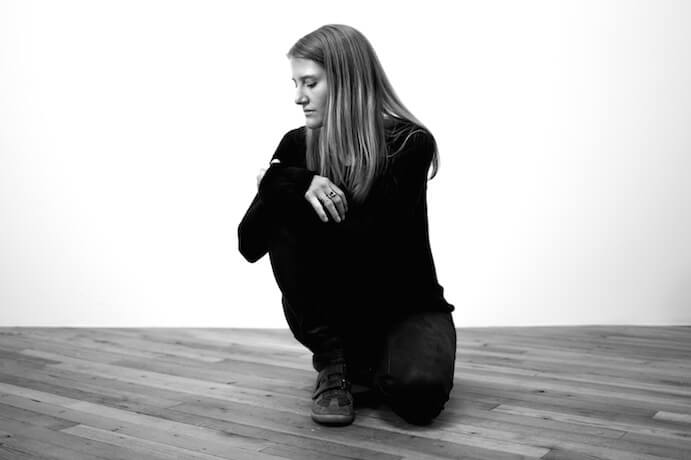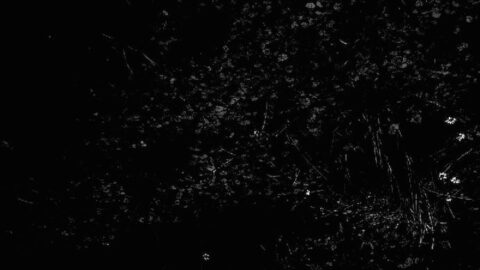You can try listening to Lesley Flanigan’s album while doing something else, but it won’t work. Hedera demands your full attention and bolts it to one spot like a rivet. The two tracks are distinctly material presences that issue from an emotive and mindful creator; indeed, Flanigan majored in sculpture in school and is especially intrigued by the physicality of sound. She builds her own electronic instruments that capture her voice to create an electric allure.
Press play on the title track, and antsy mechanical loops release and remain for almost the full twenty minutes. These insistent sounds–actually a broken tape deck–motor forward, but Flanigan’s voice cuts the motion with weightless purity. Her vocal warmth collides with the dry rhythm and spirals like an elegant tornado for the rest of the piece.

Hedera seems simple: two primary elements of looped rhythm and layered vocals. But these elements are compounded with such skill that the piece remains potent and interesting even as it builds at sediment speed. Flanigan adds glaze after glaze of vocals, wide and narrow intervals, major and minor tonalities. Perfect intervals float around half steps, and several times the vocal buildup decays into hazy silence before beginning again. The rhythm eventually phases into a second rhythm and loops back on itself. Each element has dominance or a total fade to add interest, but even with these texture changes, the piece builds to a climax. Fourteen minutes in, Flanigan moves from head voice to chest voice and swaps out round medieval vowels for a nasal cry. Her singing climbs upwards, and with one surprising half step, she introduces a new tonality like teapot steam.
Flanigan also produced a full video performance of Hedera, kneeling in a wide, white warehouse and crooning into her electronic instruments. The video highlights her immediate, full-bodied performance approach which is often more important to her concepts than recorded sound. After digesting the Hedera record, though, the video’s music is not an arresting singular presence. Instead, as one of several interactive elements, it becomes a guide wafting through clean wide space and cuing purple, bulbed, or boxed lighting.
Lesley Flanigan: Hedera from Lesley Flanigan on Vimeo.
Can Barely Feel My Feet is the record’s elegiac second track. Flanigan uses vocals to even more intimate power, and brushes of editing add current to her mournful voice. Eventually, a cello extends low tones as she slides between two notes. Unison, harmonies in thirds, wider intervals, and more layers intensify the mood. Looping rhythm like metal grasshoppers clicks in near the end. The short piece seems to have an introspective decision and ends abruptly mid-click, teasing at an unknown and dangerous story beyond.
Hedera is at once atomic and peaceful. Flanigan controls its coiled power, and the music never seems weaponized. Instead, it remains positive; unhurried, emotive, and evolutionary. Its spitting hardware rhythm coupled with a one-woman choir makes for tactile, sensual music.
























